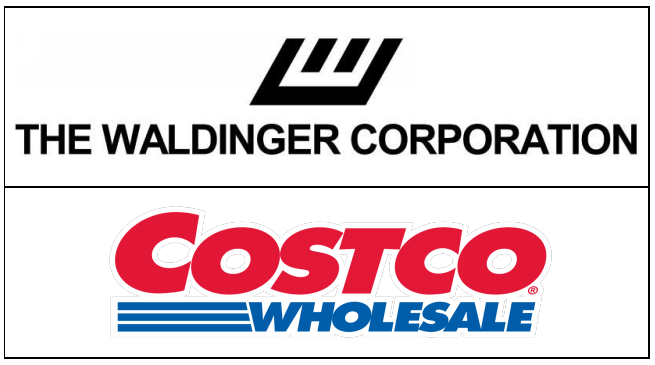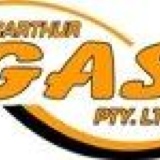Title Page
-
Warehouse number#
-
Date
-
Location
CHECKLIST
Standard Maintenance
-
1. Check in with Warehouse Manager
-
2. Inspect and tighten all electrical connections on racks and check compressor contactors for wear
-
3. Ensure all electrical components are properly closed off and secured on mezzanine, boxes, & cases
-
4. Check all oil safety contacts, high/low pressure controls and other compressor controls for proper settings. Verify that they function properly
-
5. Check all compressors for signs of short cycling. Note any compressors that are short cycling
-
6. Check and record suction points
-
Rack A:
-
Rack B:
-
Rack C:
-
Rack D:
-
7. If a receiver level trend is available, verify accuracy of liquid level transducer and record the<br>average refrigerant level over previous 8 days.<br>
-
8. Check and record power supply voltage for each rack
-
Rack A L1-L2:
-
Rack A L2-L3:
-
Rack A L1-L3:
-
Rack B L1-L2:
-
Rack B L2-L3:
-
Rack B L1-L3:
-
Rack C L1-L2:
-
Rack C L2-L3:
-
Rack C L1-L3:
-
Rack D L1-L2:
-
Rack D L2-L3:
-
Rack D L1-L3:
-
9. Verify phase monitor settings if present.
-
10. Verify proper heat reclaim operation.
-
11. Check Compressor oil levels
-
Rack A oil reservoir level:
-
Rack A oil condition & color:
-
Rack B oil reservoir level:
-
Rack B oil condition & color:
-
Rack C oil reservoir level:
-
Rack C oil condition & color:
-
Rack D oil reservoir level:
-
Rack D oil condition & color:
-
12. Check and record refrigerant levels
-
Rack A: Ref Type
-
Rack A Level:
-
Rack B: Ref Type
-
Rack B Level:
-
Rack C: Ref Type
-
Rack D: Ref Type
-
Rack D Level:
-
13. Check and note the pressure drop across each liquid line filter drier. If pressure drop exceeds 4 psi, then add to additional items to replace drier cores.
-
14. Verify that all Schrader valves have caps in place and that all service valves have caps on valve stems. NO PLASTIC CAPS on Schrader valves
-
15. Check and record color of moisture indicator on each rack
-
Rack A:
-
Rack B:
-
Rack C:
-
Rack D:
-
16. Check crankcase heater operation if applicable
-
17. Check Transducer calibration. If less than 10psi off, then calibrate transducer. If more than 10psi off, mark it for replacement on T & M
-
18. Check head fan motor operation. Clean fan guards and oil coolers
-
19. Check Condenser/Gas cooler fan contactors
-
20. Confirm all condenser/Gas coolers fan blades are balanced and not causing the motor to vibrate. Shut down each fan and inspect the blades where they are riveted to the blade mount for broken rivets or stress cracks. Inspect the motor support for broken welds or signs of fatigue. Replace any unbalanced fan blades or broken motor supports immediately
-
21. Check settings on split condenser and verify operation.
-
22. Check for proper air flow through condensers/Gas coolers
-
23. On systems, check and record condenser/Gas Coolers sub cooling:
-
Rack A:
-
Rack B:
-
Rack C:
-
Rack D:
-
24. Check all systems for floodback and note.
-
25. Inspect cases for proper airflow and case operation
-
26. Brush off all case return air grills as needed
-
27. Check anti-sweat controls, if applicable, for proper operation.
-
28. Clean radiators on pumps (if applicable)
-
29. Inspect walk in cooler/freezer evaporator coils and fan guards for dirt and ice. Check that all fans<br>are operating.<br>
-
30. Inspect walk in cooler/freezer for strip curtains. Are they present and in good condition. Quote if<br>in need of replacement.<br>
-
31. Check all circuit temperatures in controller. Verify that all systems are maintaining proper<br>temperatures.<br>
-
32. Check alarm logs. Identify recurring alarms that need attention.
-
33. Check controllers for overrides. Determine why, if any, overrides are in place.
-
34. Test and verify that local alarm lights and horn function properly. Also test and verify that refrigeration alarm connection is hooked up by simulating a rack alarm and confirming warehouse receives notification of that alarm from the alarm company.
-
35. (a) An EPA certified technician must check the entire warehouse for refrigerant leaks, including<br>rooftop condensers and water tower bundles.
-
35. (b) Technician must use an electronic leak detector operated and maintained according to manufacturer guidelines, and any other method(s) determined by the technician to be appropriate for the appliance.
-
35. (c) Technician who performed the leak inspection to record all information on Costco’s Leak Inspection Form attached to this check list.
-
36. Check refrigerant piping clamps and hangers. Tighten loose connections.
-
37. Check all refrigerated room doors for proper sealing and operation (POS boxes, Prep rooms,<br>Coolers, Shop-ins, etc).<br>
-
38. Check all lighting in Cases, Prep rooms, POS boxes, Coolers, Shop-ins, etc. Note those that<br>need replacement.<br>
-
39. Visually check refrigerant piping insulation for missing sections or splits.
-
40. If applicable: Inspect Cooling Tower (If Tower Requires Cleaning, then perform Cleaning on T &<br>M), Check Overall Function of Tower. Grease or Lube Bearings, Check Belts, Check chemical hose for leaks and alarms relaying to the controller for proper operation.<br>
-
41. Check HCR Air Door/s for proper function and calibration using manufacturer recommended<br>procedures http://www.hcr-inc.com/costco/. Also check belts for wear. Clean any screens that are dirty or are looking clogged,clean plenums, coils,& box with motor (including motor, blower wheel, and blower housing). If additional cleaning or screens are needed quote on T&M<br>
-
42. Leave a copy of this inspection report in machine room file box.
-
43. Test Freon Leak Detector(s) to confirm proper function and that they properly communicate with<br>Micro Thermo if present or the rack controller.
-
43. (a) Confirm notification parameters meet federal, state, and local requirements. Audit and calibrate the Leak Detector(s) using manufacturer recommended procedures to ensure Leak Detector(s):
-
43. (b) Accurately detect a concentration level of 10 parts per million (PPM) of vapor of the specific refrigerant(s) used in the appliance(s)
-
43. (c) Alert the operator when a refrigerant concentration of 100 PPM of vapor of the specific refrigerant(s) used in the appliance(s) is reached.
-
44. Remove all Hazmat items from Costco premises, such as oil, acid test kits, cleaners, rags etc.<br>and dispose of these items by following local and federal jurisdictions.<br>
-
45. Check for any super hoses that need replacement and quote to replace with encapsulated<br>controls.<br>
-
46. Check for oil leaks under the separator and fix.
-
47. Check and test back up battery UPS in each rack and or controller if present
-
48. Check all gas defrost system to verify defrost termination temp is reached
-
49. Check compressor oil level controls and operation
-
50. Confirm two temprite oil filters on site. Please quote if not.
-
51. Confirm an additional EEPR board is on site. Please quote if not.
-
52. Picture of Machine Room/Mezzanine
-
53. Picture of Rack Condensers
-
54. Picture of Oil Levels
-
55. Picture of Acid Test
-
56. Picture of Evaporators Cleaned
-
57. Picture of Water Tower Bundle
-
58. Picture of Water Tower on the Outside
-
59. 100% Clean compressor room. Empty any garbage cans. Remove oil from racks,<br>compressors, frames, rack pans and lines.<br>
If Glycol System is Present
-
60. Check Pump Controls to insure proper operation (low temp thermostat, Pump differential pressure switches, system relief valves), note any issues
-
61. Verify the pump cycling sequence is operating correctly
-
62. Check the low temperature (freeze stat) turns off the liquid line solenoid valve(s)
-
63. If pump bearings are not sealed, grease if needed
-
64. Visually inspect pumps/piping/exchangers for signs of leaks, note any leaks for repair
-
65. Check Glycol Concentration Percentage to make sure it is at 35% - Check Glycol Temperature with Refractometer
-
66. Check for visible Glycol level in overflow tank
-
67. Wipe down pan for pump station
-
68. Send glycol out for analysis to check on the condition of the inhibitors in the glycol and send the report to the Costco Refrigeration Team
-
69. Confirm two 55 gallon barrels of Glycol are on site. One barrel of 100% Glycol, a second barrel of 35% Glycol. If not please quote to order
If Rooftop (Refrigeration) Air Handlers are Present
-
70. Change all filters in each of the Rooftop air handlers (ONLY Refrigeration Air Handlers, NO HVAC units)
Fall PM Additional Items - PM must be completed between August 1st to October 31st
-
71. Wash evaporators in the Produce Cooler
-
72. Clean the drain pans in Produce Cooler and clear drain lines with CO2
-
73. Clean all self-contained on sales floor, flower case, cake case, blast freezer, breakroom & food court Ensure proper operation of each case
-
74. If Leak Detector(s) present are HGM 300 or HGM MZ, must change inline or hydrophobic filter and charcoal filter, contact Micro Thermo for Maintenance kit
-
75. Oil acid test all racks, note those that need oil changes or filter replacements (Excluding CO2)
-
76. Verify Pump Performance for EVAC system. Perform annual pump performance test
Items That Require Additional Work
-
Notes:
-
Technician Signature
-
Managers Signature does not 'OK' additional work. It is just a confirmation that they were spoken to and showed the results of this PM.
-
Warehouse Manager Signature











